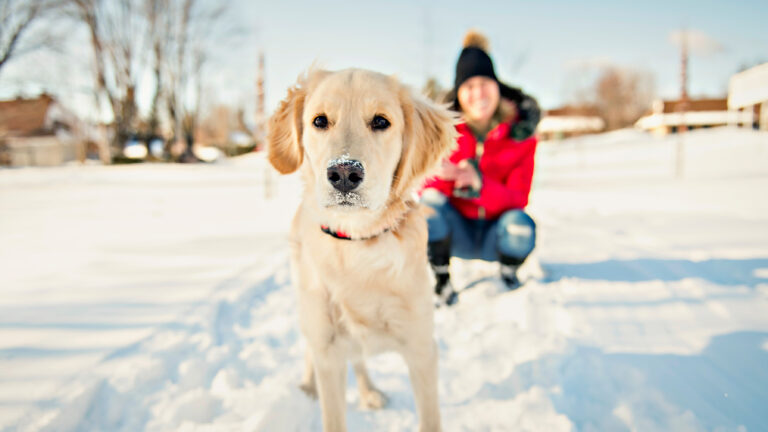Winters can get lazy, even for dogs. However, it is crucial for you and your four-legged companion to get adequate physical exercise during the cold seasons, as the metabolism can decrease. While many dog owners like to stay indoors during these harsh conditions, going out is essential to exercise and enjoy outdoor time, or the dog is susceptible to hyperactive behaviour and chewing. Whether you live in a cold country or have a bad winter season this year, keeping dogs active is imperative to prevent unnecessary health risks.
Given below are 4 things you need to remember while walking your dogs, along with a few tips for a safe walking routine for your dogs:
The Value Of Winter Apparel For Dogs
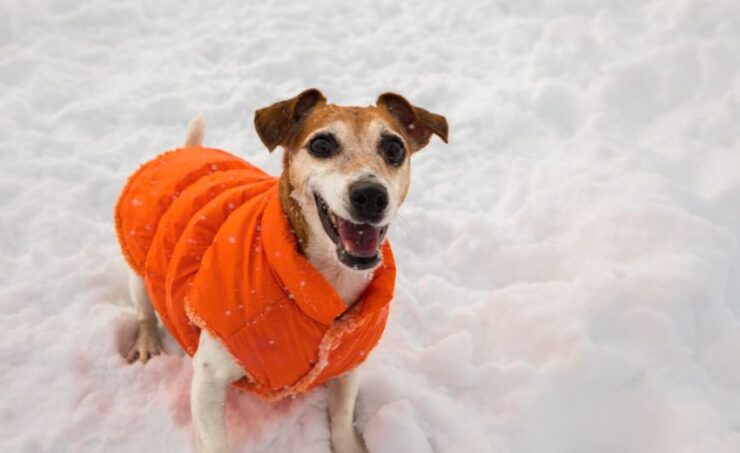
Clothing and accessories are essential for certain breeds and age groups to provide extra layers during winter. Not only do they do an excellent job of keeping your companion warm and comfortable, but they also make them look cute and stylish. This winter, purchasing them from a reputable store ensures you receive high-quality holiday-themed linens, fastened collars, and reinforced complementing leashes. Choosing the appropriate provider is critical for receiving the greatest rates on tailored apparel, dog collars, and comfy pet beds! You can find here a vast range of brilliant and exquisite snowsuits for dogs for special events like Christmas and themed ones to match the current trend. Given below are some useful suggestions:
- Coats: Coats are crucial for generating and retaining body temperature, especially when purchased from a reliable supplier who pays due credit to functionality. Coats are perfect for arctic temperatures around 20-30 degrees Fahrenheit. Some also come with easy Velcro strap-ons.
- Sweaters or Hoodies: Sweaters and hoodies work great in the low-medium risk range in the previously-mentioned table. They do not work as effectively as thick coats but do the job of protecting your pup from the dreads of the cold.
- Boots: Lastly, your dog needs a pair of winter-themed boots to keep its paws from freezing and maintain style. While choosing apparel and boots, always read the size instructions to get the right fit. Always go for durable and warm boots that are easy for your dog to wear.
The Degree Of Climatic Severity
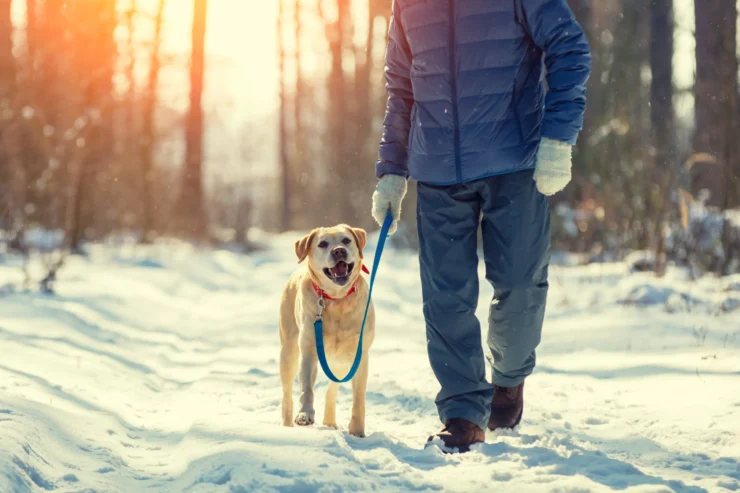
Remember to analyse the weather conditions through forecasts, and always look at the temperature levels before walking. While dog breeds and age factors need to be considered while checking your dog’s necessity for wearing clothes, remember that harsh weather can render a dangerous environment for dog walks. Chilly winters and rainfalls are also crucial factors, for most regions face flooding during this time. Other variables to factor would be prevailing health conditions, fur length, and sleet. Feel free to use the below-given chart for choosing the right time for walks:
| Temperature | Small Dogs | Medium Dogs | Large Dogs |
| 15 C (60 F) | Safe | Safe | Safe |
| 12 C (55 F) | Safe | Safe | Safe |
| 10 C (50 F) | Low Risk | Low Risk | Safe |
| 7 C (45 F) | Low Risk | Low Risk | Low Risk |
| 4 C (40 F) | Moderate Risk | Moderate Risk | Moderate Risk |
| 1 C (35 F) | Moderate Risk | Moderate Risk | Moderate Risk |
| -1 C (30 F) | Moderate Risk | Moderate Risk | Moderate Risk |
| -4 C (25 F) | High Risk | High Risk | Moderate Risk |
| -6 C (20 F) | Dangerous | High Risk | Moderate Risk |
| -9 C (15 F) | Dangerous | High Risk | High Risk |
| -12 C (10 F) | Dangerous | Dangerous | Dangerous |
| -15 C (5 F) | Dangerous | Dangerous | Dangerous |
| -17 C (0 F) | Dangerous | Dangerous | Dangerous |
If you live in a danger zone or prone area, then it is for the dog’s best to cut the walks short or don’t do them entirely. Keep them for around 20 minutes, and stick to indoor toy games, hide and seek, and other exercises they like.
The Harmful Effects Of Snow Contact
Snow is way more dangerous for dogs than you think. Not only is it unsanitary, but also dangerous on the grounds of chemical toxicity. Several governments use salts and harmful chemicals for snowmelts, which are not dog-friendly. Consumption of these chemicals can cause acute diseases. Especially because dogs are attracted to crunchy objects like snow, they might gobble some up as water. If they become thirsty often, always pack a bottle of water during walks. This will quench their thirst and help them stay away from eating snow.
The Signals From Your Dog
Your dog communicates with you in terms of their body language and attitude, so with adequate observation, you can catch hold signals that might help as a clue. Often, you might notice your companion shows a sudden disinterest in walks, digging paws and rolling on the floor while kept on a leash. Some dogs also start whining around daily walk times, showing discomfort and reluctance to go outside. Although shivering and cowering are common characteristics of specific breeds like a Chihuahua, sudden behavioural changes are obvious signs of discomfort that you must look out for.
The Use Of Leashes
Although your dog is scrupulously honest and has never strayed, never walk him without a leash throughout the winter. The presence of snow frost and ice-melt salts on the pavements can make it challenging for a lost dog to find his way back, and limited visibility might make it impossible for others to recognize you. Use a jogger’s leash or one that hooks to your waistband or over the shoulder for extra safety in the cold. People who have pulling dogs might consider utilising a no-pull halter, particularly when the terrain is slick due to ice and snow.
Winter Dog-Safety Tips
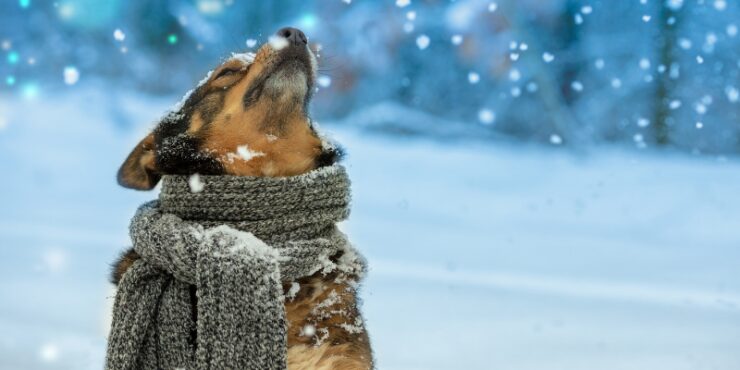
At this point, it is common for readers to ask, “why not just give up walking altogether?” The answer is that it remains the dog’s best form of cardiovascular exercise. Whether dogs have a love-hate relationship with the snow or not, it is the dog owner’s responsibility not to steal the experience of dog walking exercises and make winter walks a smooth terrain to walk on. Walking prevents heart diseases and burns fat for dogs, and with the right tips in mind, winter walks can be a harmless and enjoyable experience for both of you. Remember the following tips:
- Protect dogs more susceptible to the cold, like Chihuahuas and French bulldogs. While Siberian Huskies and Alaskan Malamutes are biologically capable of generating and retaining heat, older ones require extra layers of protection in sweaters, coats, and boots. Leaner dogs closer to the ground, like Welsh Corgis, Greyhounds, and Poodles, also require additional water-resistant winter apparel.
- Avoid salt and snow contact with the paws, as they can serve as irritants. They are filled with toxic chemicals and can be avoided using quality rubber boots. Certain dogs feel uncomfortable with boots, in which case you can use a protective wax cream. Make sure you clean it off after the walk has concluded.
- For the best, reduce the amount of time spent outdoors during winter. This is because there is no real way to test a dog’s immunity, and taking them on regular winter walks can make them susceptible to conditions like hypothermia and frostbite.
Conclusion
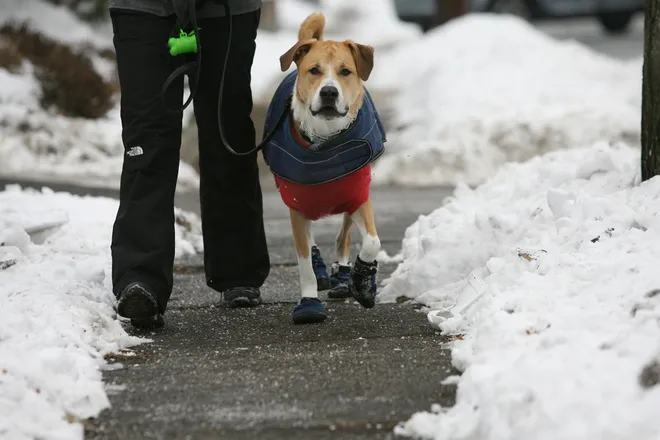
And that marks the end of all you need to know about dog walks during winter. As easy as it is to give up, it is crucial not to keep the dog’s active lifestyle at stake. The tips above can help you and your four-legged companion have a great winter season. Always choose your dog apparel from the quality and reliable suppliers for superior materials and fabrics.
Related Posts:
- 15 Best Dog Food For Allergies 2024 - Adult, Puppy…
- Top 10 Best Dog Nail Grinder 2024 - Best Care for Your Pet
- 20 Best Gaming Headset Under 50$ 2024 - for PC, PS4,…
- Top 10 Best Outdoor Basketball Shoes 2024 - Durable…
- 15 Best Shoes for Walking on Concrete 2024 - Soft &…
- 10 Best Coffee For Cold Brew 2024 - Top Quality Brands

